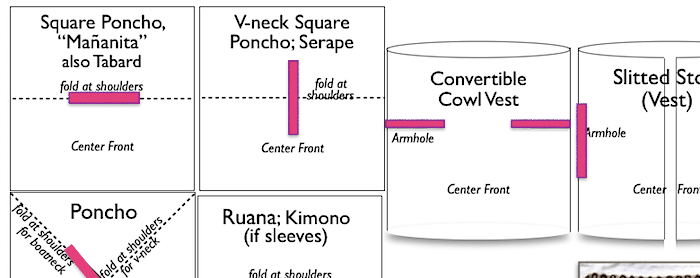Pattern schematics inspire me to steek crochet.
I wish every crochet garment pattern offered a schematic. It outlines the sections of a garment, like puzzle pieces. Schematics cut through illusions cast by fashion photography and lovely models. A single pattern schematic can distill a fancy design to its simplest essence. I created two Pinterest boards of things that inspire me to steek crochet: Steeks: Ideas and Wearable Simple Shapes.
Schematics also cut through language barriers. I can understand a non-English pattern if it includes a good schematic or two.
I created a few sample schematics for the Tunisian steek crochet class handout and realized how much I get out of them. This would be the next newsletter issue if I had time to do one! (Too much conference prep.)

Update! I wrote newsletter #80, Pattern Schematics for Insiders & Outsiders, three months after I wrote this blog post. Note that shop links in its right-hand column are outdated as of Sept. 2017.
A schematic is sensational to me when a garment that looks chic on a model, yet its schematic reveals that it’s made of simple shapes like rectangles. It’s exciting because every crocheter or knitter first learns how to make rectangles, right?
Sometimes all you need is a rectangle that drapes, or is clingy/stretchy (or all of these). Sometimes weightlessness brings it home, other times it’s a luxuriously weighty swing. The schematic tells you what’s what when you know what to look for.
Sometimes the key to chic is a well-placed seam on a simple shape. Sometimes it’s a special edging. And sometimes it’s the where and how of the steek. Steek crochet for the easy chic of it.
I love this conference prep blogging because it makes me aware of things that I’ve done for years, like collect pattern schematics.
